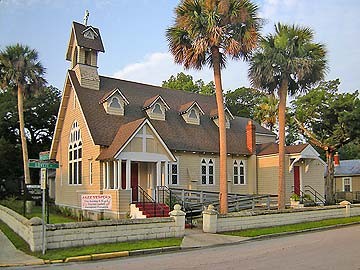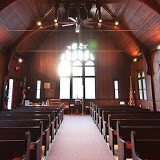St. Cyprian's Episcopal Church
Introduction
Text-to-speech Audio
Images
St. Cyprian's Historic Episcopal Church was established in the 1890s.

The church interior features beautiful woodwork.

Backstory and Context
Text-to-speech Audio
Trinity Parish was St. Augustine's first Episcopal Church, but
it didn’t escape the racism of Post-Confederate South. A woman by the name Mrs. Julia Jackson from the Bahamas moved to St.
Augustine. Understanding why African-Americans were uncomfortable with the
Episcopal churches, she offered the people to worship with her in a different
place. In 1893, Bishop Edwin Gardner Weed sent a deacon to take over from Mrs.
Jackson. This became the first African-American Episcopal Church in St.
Augustine.
The present church was restored in 1990. This is also when the membership, finances, and structure began to decline. P.W. Cassey, who was the first deacon of the new church, built the church as a solid, comfortably segregated pillar of Lincolnville. The church became welcoming and even accepted gays in the church and leadership, which caused many parishioners to leave it in 2006.
Cite This Entry
M., Ben and Angela Moore. "St. Cyprian's Episcopal Church ." Clio: Your Guide to History. September 8, 2018. Accessed July 31, 2025. https://theclio.com/entry/26862
Sources
"History." St. Cyprian's Episcopal Church. Accessed November 30, 2014. http://www.stcypriansepiscopalchurch.org/history.html.
